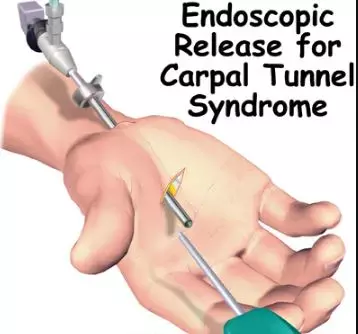- Home
- Medical news & Guidelines
- Anesthesiology
- Cardiology and CTVS
- Critical Care
- Dentistry
- Dermatology
- Diabetes and Endocrinology
- ENT
- Gastroenterology
- Medicine
- Nephrology
- Neurology
- Obstretics-Gynaecology
- Oncology
- Ophthalmology
- Orthopaedics
- Pediatrics-Neonatology
- Psychiatry
- Pulmonology
- Radiology
- Surgery
- Urology
- Laboratory Medicine
- Diet
- Nursing
- Paramedical
- Physiotherapy
- Health news
- Fact Check
- Bone Health Fact Check
- Brain Health Fact Check
- Cancer Related Fact Check
- Child Care Fact Check
- Dental and oral health fact check
- Diabetes and metabolic health fact check
- Diet and Nutrition Fact Check
- Eye and ENT Care Fact Check
- Fitness fact check
- Gut health fact check
- Heart health fact check
- Kidney health fact check
- Medical education fact check
- Men's health fact check
- Respiratory fact check
- Skin and hair care fact check
- Vaccine and Immunization fact check
- Women's health fact check
- AYUSH
- State News
- Andaman and Nicobar Islands
- Andhra Pradesh
- Arunachal Pradesh
- Assam
- Bihar
- Chandigarh
- Chattisgarh
- Dadra and Nagar Haveli
- Daman and Diu
- Delhi
- Goa
- Gujarat
- Haryana
- Himachal Pradesh
- Jammu & Kashmir
- Jharkhand
- Karnataka
- Kerala
- Ladakh
- Lakshadweep
- Madhya Pradesh
- Maharashtra
- Manipur
- Meghalaya
- Mizoram
- Nagaland
- Odisha
- Puducherry
- Punjab
- Rajasthan
- Sikkim
- Tamil Nadu
- Telangana
- Tripura
- Uttar Pradesh
- Uttrakhand
- West Bengal
- Medical Education
- Industry
Endoscopic Versus Open Carpal Tunnel Release- outcomes in Carpal tunnel syndrome

Carpal tunnel syndrome can be treated surgically the open carpal tunnel release (OCTR) and endoscopic carpal tunnel release (ECTR) approach, both having their own advantages and disadvantages. Okutsu et al. were the first to report the use of ECTR for the treatment of CTS in the English literature in 1989. This method allows for smaller skin incisions and better esthetic results than OCTR . Nevertheless, ECTR is technically difficult, time consuming, and associated with incomplete transverse carpal ligament release and neurovascular injury.
According to recently published research in Journal of Hand Surgery, Endoscopic carpal tunnel release may be preferred over open carpal tunnel release in patients who need to return to work within the first 2 weeks after the procedure.
Researchers undertook this study to compare the short-term outcomes of endoscopic carpal tunnel release (ECTR) and open carpal tunnel release (OCTR), including patient-reported outcomes, pain and satisfaction scores, return to work, and postoperative prescription pain medication use.
For the study design, the team included all patients over 18 years of age undergoing carpal tunnel release at a single hand center between January 2018 and December 2019. The carpal tunnel release method was driven by variations in surgeon practice. Data from patient-reported outcomes measurement information system (PROMIS) questionnaires and brief Michigan hand outcomes questionnaires and data on patient-reported pain levels, satisfaction with care, return to work, and postoperative prescription pain medication use were collected at preoperative visits and the first follow-up visit between postoperative days 7 and 14.
Results highlighted the following facts.
- They included 678 (586 ECTR and 92 OCTR) patients. The median age was 58 years, and 75% of the patients were women. At early follow up, patients who underwent OCTR reported significantly lower postoperative PROMIS upper-extremity scores than those who underwent ECTR (median, 32 vs 36 points, respectively) but similar postoperative PROMIS pain interference, global physical health, global mental health, and brief Michigan hand outcomes questionnaire scores.
- The postoperative pain and satisfaction scores were similar between the 2 groups. In multivariable models, patients who underwent OCTR had 62% lower odds of returning to work and 30% greater odds of remaining on a postoperative pain prescription at the first follow-up visit.
"This study found no evidence suggesting the definitive superiority of 1 surgical technique with regard to clinical outcomes in the early postoperative period. However, OCTR was associated with lower postoperative PROMIS upper-extremity scores of unclear clinical significance, higher odds of remaining on pain medication, and lower odds of returning to work by the first postoperative visit. Endoscopic carpal tunnel release may be preferred in patients who need to return to work within the first 2 weeks after the procedure."the team concluded.
For full article follow the link: https://doi.org/10.1016/j.jhsa.2021.04.030
Primary source: Journal of Hand Surgery
Dr Satabdi Saha (BDS, MDS) is a practicing pediatric dentist with a keen interest in new medical researches and updates. She has completed her BDS from North Bengal Dental College ,Darjeeling. Then she went on to secure an ALL INDIA NEET PG rank and completed her MDS from the first dental college in the country – Dr R. Ahmed Dental College and Hospital. She is currently attached to The Marwari Relief Society Hospital as a consultant along with private practice of 2 years. She has published scientific papers in national and international journals. Her strong passion of sharing knowledge with the medical fraternity has motivated her to be a part of Medical Dialogues.
Dr Kamal Kant Kohli-MBBS, DTCD- a chest specialist with more than 30 years of practice and a flair for writing clinical articles, Dr Kamal Kant Kohli joined Medical Dialogues as a Chief Editor of Medical News. Besides writing articles, as an editor, he proofreads and verifies all the medical content published on Medical Dialogues including those coming from journals, studies,medical conferences,guidelines etc. Email: drkohli@medicaldialogues.in. Contact no. 011-43720751


